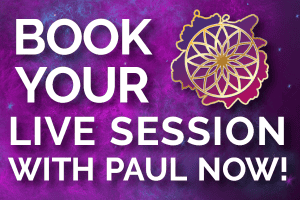
Kundalini Meditation can clear your chi and mind. A Shutterstock Licensed Image.
From the late 1990s to the early 2000s, I spent time with Harbhajan Singh Khalsa, often known as Siri Singh Sahib to his followers. To the world, he was most prominently known as Yogi Bhajan (1929-2004). A deeply devoted Sikh, healer, vegan, intuitive master, entrepreneur, founder of the Kundalini meditation and yoga movement, and executive director of a global economic foundation There may never be another Yogi Bhajan. He was remarkable.
When we visited together, I would affectionately call him, “Yogi.” In my heart, I felt him to be akin to Yogi Bear, a big, playful, cuddly, and protective friend.I loved his warmth and intensity. After he would lovingly calculate the numerology of my birth, Yogi would say, “Paul, you love to play a foot beneath your potential. Why is that?” I am still unable to answer that question.
When wandering within spiritual circles, seeking the master within, it’s not always obvious how important a particular experience or person might become to us. It might be said that I took Yogi Bhajan for granted, never fully understanding that his generosity and friendship were some of the loveliest and most essential gifts to my life.
Yogi Bhajan was the founder of 3HO (the Healthy, Happy, Holy Organization), and the first spiritual master to openly teach Kundalini meditation and yoga in the United States. Yogi was a stunning and powerful gem, and his gift of Kundalini meditation and yoga has touched millions of lives.
“When you don’t go within, you go without.”
— Yogi Bhajan
What Is The Purpose Of Kundalini Meditation?
The purpose of Kundalini Meditation and other forms of meditation and yoga is to help us release the false identities that enslave us into projection, instability, anxiety, and attachment.
By reducing our attachments to our public identities, inflamed egos, troubled minds, and contrived masks, we move deeper into spirit and become more attuned to our original selves. Through regulated breathing patterns (pranayama) and specific postures (body and hands) known as mudras, we increase our vibrations and align with divine frequencies. Think of meditation as a spiritual, chiropractic adjustment.
Our vibrations and frequencies are vital to our pursuit of awakening and liberation. When our vibrations are hampered, we pursue and magnetize toward people, places, events, intentions, thoughts, and actions that disconnect us from the light and our highest potentialities. If we can be single-minded and heart-centered in our spiritual intentions, we will inch toward liberation. Meditation and yoga are beneficial in this pursuit.
“You owe it to yourself to be yourself.”
— Yogi Bhajan
How Do I Do Kundalini Meditation?
There are several types of Kundalini meditation, some of which can enliven a variety of aspects within our bodies and spirits. Consider being careful with this type of meditation. Many trendy, new-age derivatives may or may not be helpful in your pursuit of light and love.
Kundalini meditation is an ancient practice and should be engaged with the highest standards in mind.
Here is Yogi Bhajan’s original Kundalini Meditation, which he began teaching in the United States in the late 1960s. I’ve infused Yogi’s original form of meditation with a few suggestions for a gentler experience.
“I do not believe in miracles, I rely on them.”
— Yogi Bhajan
Yogi Bhajan’s Original Kundalini Meditation
- Sit comfortably with your spine straight: It’s okay to rest on a chair or couch, but sitting on a meditation pillow on the floor will strengthen your spine, deepen the effects of your breath, and improve your breathing patterns.
- Form a mudra: Use your hands to create an open-fingered (pointed upward) chalice or lotus flower. Your pinkies and thumbs should be pressed together, while the other fingers are spread out to form an open cavity. Hold this flower in front of your heart, remembering to keep your spine straight. Specific hand formations like these are known as mudras. Mudras are most often aligned with Buddhist and Hindu principles and inspire energetic flow and an uprising of vibration.
- Eyes: If possible, close your eyes and then open them ever so slightly. If you can also roll your eyes upward, it will be of benefit to the experience. You can also look down or toward the light through the open slit.
- Settle-in: To relax into a pre-meditative state, inhale deeply and exhale three times. Pause, breathe regularly, then repeat. Amidst this breathing, release tension, fear, masks, and preconceived notions.
- Fifteen minutes of breathing: To begin partial pranayama breathing, inhale one-third of a full breath and hold for 15 seconds. Inhale another one-third for 15 seconds. Inhale the final 15 seconds, then exhale. Repeat this pattern of breathing for 5 to 15 minutes, preferably as near to 15 minutes as possible. If you need to start with 10 seconds of holding the breath at each interval, that’s okay, too. If you’d prefer, consider increasing the ranges up to 20 seconds in length.
- Eleven minutes of chanting mantra. The original mantra for this meditation is Har Jee Har Har Har Har Har Jee. The mantra translates roughly to: “O, my soul, (the creative) God is, God is, God is, God is, O, my soul.” You may also chant the simpler mantra, “Sat Nam,” which means, “Truth or True (Sat) identity (Nam).” If your faith falls under a different tradition, you may simply repeat the name of your desired deity.
- Repeat the initial pranayama breathing pattern.
“You are very powerful, providing you know how powerful you are.”
— Yogi Bhajan
How Does Kundalini Meditation Relate To Kundalini Yoga?
Kundalini meditation is built into Kundalini yoga, and meditation is a form of yoga. Yoga and meditation practices are aligned, in that they are often designed to remove the mental chatter and obstacles that prevent us from seeing ourselves clearly. Meditation is focused on the breath and resting posture and does not traditionally include physical movement. Meanwhile, traditional yoga involves specific breathing patterns, structured physical movements and positions, and basic meditation.
often designed to remove the mental chatter and obstacles that prevent us from seeing ourselves clearly. Meditation is focused on the breath and resting posture and does not traditionally include physical movement. Meanwhile, traditional yoga involves specific breathing patterns, structured physical movements and positions, and basic meditation.
Without Kundalini meditation, there would be no Kundalini yoga, yet the inverse is not necessarily true. According to many enlightened spiritual masters, meditation is the most beneficial modality for spiritual advancement. It deepens our connection to our most authentic selves, expands our spirits, and broadens our capacity for compassion and awareness. Meanwhile, the physical components found in yoga are not essential for every initiate and might not enhance every person’s spiritual path.
Many of the derivative and hipster forms of yoga in the market today are nothing more than exercise. Depending upon its lineage and quality, and the intentions and depth of the teacher, yoga can be self-centered, and, therefore, antithetical to the pursuit of a spiritual awakening. New-age yoga has become an integral part of pop-culture. This has had positive and negative effects. While some of the forms of the new yoga are inching people closer to peace and liberation, other types are indulgent and might inspire self-gratification.
According to ancient principles, this type of egocentric validation can quickly placate and stifle an individual’s ability to achieve a divinely inspired clarity. When choosing a yogic path, be discerning. Seek clear, loving, and dedicated instructors who embody the principles of the original Hindu and Buddhist teachings. You can learn more about Yogi Bhajan’s teachings at 3HO and Library of Teachings.



